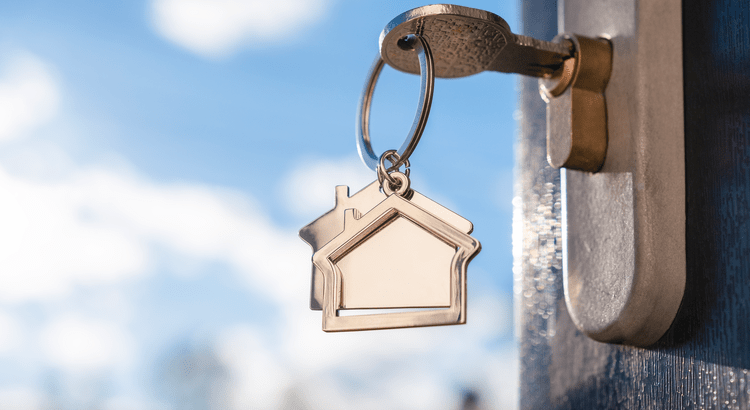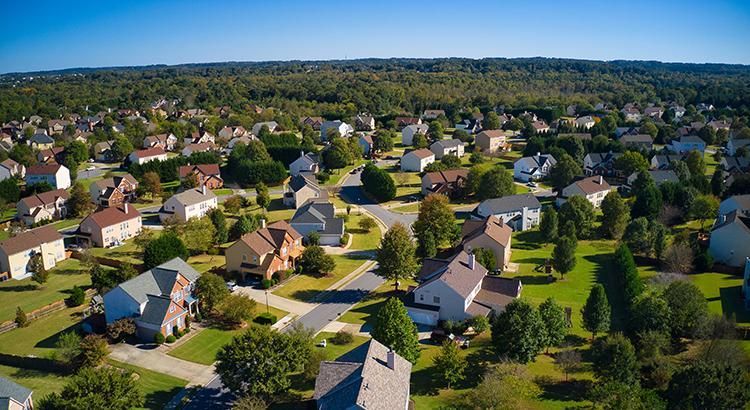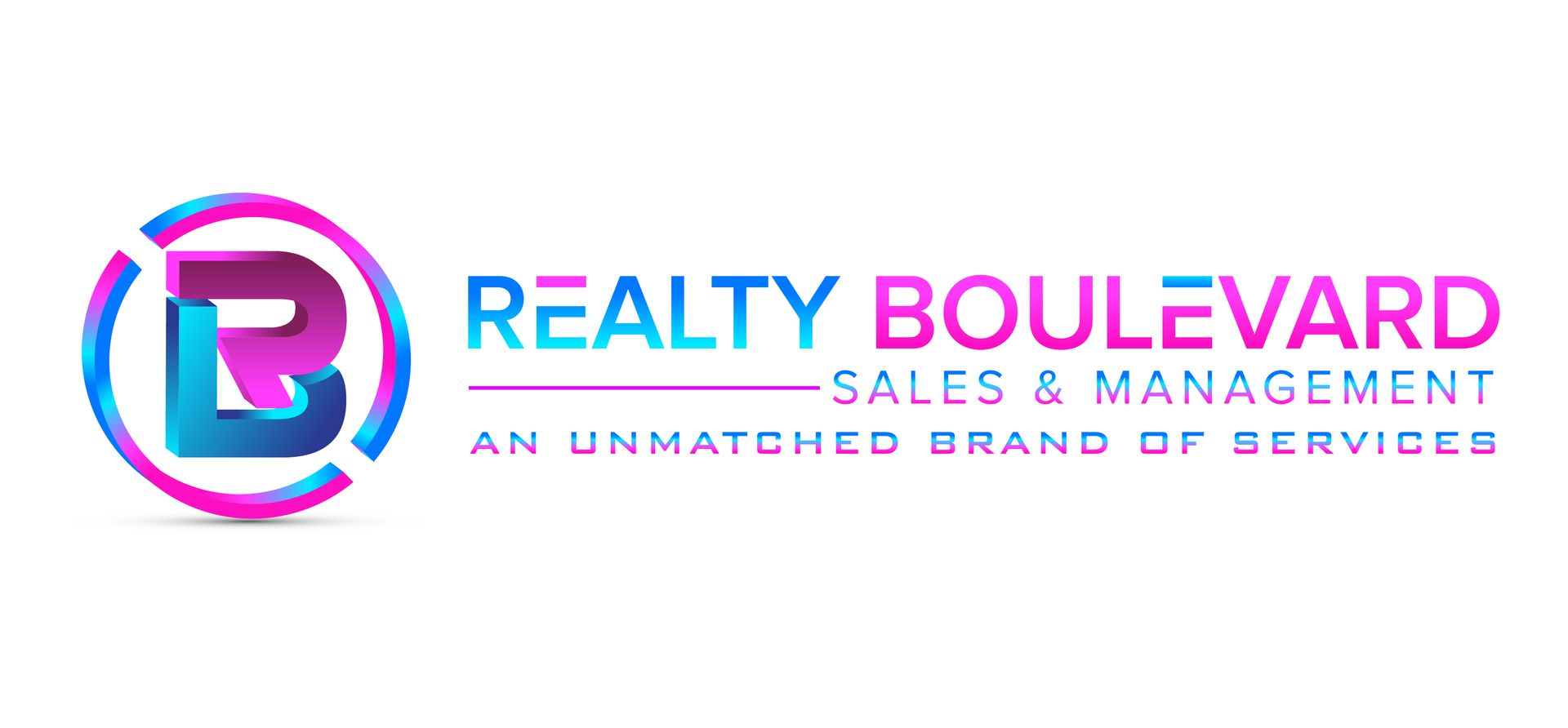BLOG

How To Make Sure Your Sale Crosses the Finish Line If there was one simple step that could help make your home sale a seamless process, wouldn't you want to know about it? There’s a lot that happens from the time your house goes under contract to closing day. And a few things still have to go right for the deal to go through. But here’s what a lot of sellers may not know. There's one part of the process where some homeowners are hitting a road bump that’s causing buyers to back out these days. But don’t worry. The majority of these snags are completely avoidable, especially when you understand what’s causing them and how to be proactive. That’s where a great agent (and a little prep) can make all the difference. What’s Causing Some Buyers To Back Out The latest data from Redfin says 15% of pending home sales are falling through . And that’s not wildly higher than the 12% norm from 2017-2019. But it is an increase. That means roughly 1 in 7 deals today don’t make it to the closing table. But, at the same time, 6 out of 7 do. So, the majority of sellers never face this problem – and odds are, you won’t either. But you can help make it even less likely if you know how to get ahead. You might assume the main reason buyers are backing out today is financing. But that’s actually not the case. The most common deal breaker today, by far, is inspection and repair issues (see graph below): Here’s why that’s a sticking point for buyers right now: Buyers are already stretched thin from high prices and challenging mortgage rates, so they don’t have the appetite (or budget) for unexpected repairs. If they’re going to spend all that money, they want to get something that’s move-in ready. They don’t want to take on another high-cost project themselves. They have more homes to choose from, so if yours seems like a hassle or if you’re not willing to fix something, they can just move on. The sellers with the best agents have heard about this shift and they’re doing what they can to go in prepared. Enter the pre-listing inspection. What’s a Pre-Listing Inspection? It’s exactly what it sounds like. It’s a professional home inspection you schedule before your home hits the market. And while it’s not required, the National Association of Realtors (NAR) explains why it could be a valuable step for some sellers right now: “To keep deals from unraveling . . . it allows a seller the opportunity to address any repairs before the For Sale sign even goes up. It also can help avoid surprises like a costly plumbing problem, a failing roof or an outdated electrical panel that could cause financially stretched buyers to bolt before closing .” Think of it as a way to avoid future headaches. You’ll know what issues could pop up during the buyer’s inspection – and you’ll have time to fix them or decide what to disclose before you put your house on the market. This way, when the buyer’s inspector walks in, you’re ready. No surprises. No last-minute panic. No deal on the line. Is It Worth It? Generally speaking, a pre-listing inspection costs just a few hundred dollars. So, it’s not a big expense. And the information it gives you is invaluable. But before you make that investment, talk to your local agent. In some markets, it may not be worth it. And in others, it may be the best move you can make. It all depends on what’s happening where you are and what’s working for other local sellers. If your agent recommends getting one, they’ll also: Help you decide which issues to fix Prioritize repairs based on what buyers in your area are focusing on Connect you with trusted professionals to get the work done Ensure you understand local disclosure laws That small step could save your deal (and your timeline). Bottom Line So, if there was one simple step that could help make your home sale go according to plan, would you do it? If you’d rather deal with surprises on your terms (not with the clock ticking under contract), let’s talk about whether a pre-listing inspection makes sense for your house. It may be worth it so you can hit the market confident, prepared, and in control.

The 3 Housing Market Questions Coming Up at Every Gathering This Season Whether it’s at a family gathering, your company party, or catching up with friends over the holidays, the housing market always finds its way into the conversation. Here are the top three questions on a lot of people’s minds this season, and straightforward answers to help you feel more confident about the market. 1. “Will I even be able to find a home if I want to move?” Yes, more than you could a year or two ago. The number of homes for sale has been rising over the past few years. According to data from Realtor.com, there have been more than one million homes on the market for six straight months, something that hasn’t happened since 2019 (see graph below): That means two things: Buyers have more options. Sellers have more places they can move to next. Many homeowners who held off are realizing the shelves aren’t bare anymore. So, if you hit pause on your home search last year because nothing fit your needs, it may be worth another look. With more homes on the market now, you’re not competing for the same handful of listings like you were a couple of years ago. And because there’s a bit more to choose from, homes aren’t disappearing the minute they hit the market. That gives buyers more space to breathe, more options to compare, and a little more time to make a confident decision. 2. “Will I ever be able to afford a house?” Affordability is starting to improve. Finally. It’s been a tough few years for buyers. But this year brought some much-needed good news: Mortgage rates have been easing. Home price growth has been moderating. That adds up to a monthly mortgage payment that’s hundreds of dollars lower than it would have been just a few months ago (see graph below): Buying still isn’t easy, but the numbers are starting to improve. For a lot of people, that means buying a home is becoming a more realistic goal again. 3. “Should I wait for prices to come down?” A lot of people worry that the housing market is about to crash, but the data doesn’t point in that direction. Yes, the number of homes for sale has been rising, but it’s still nowhere near the level needed for prices to fall significantly on a national scale. On top of that, homeowners today have a lot of equity and are in a much stronger financial position than they were back in 2008. Of course, every local market is a little different. Some areas are still seeing prices climb, while others that saw huge spikes a few years ago are leveling off or seeing small corrections. But overall, the national picture is clear: experts surveyed by Fannie Mae project home prices will keep rising, just at a slower, more normal pace (see graph below): That’s why waiting for a major price drop to get a deal isn’t a very strategic plan. History shows the same thing over and over: people who spend time in the market tend to build the most long-term wealth, not the people who try to time the market perfectly. Bottom Line Talk about the housing market can feel loud and confusing, especially when you’re hearing so many different takes. If you want to understand what these trends mean for your goals, let’s connect and walk through it together.

Thought the Market Passed You By? Think Again. If you stepped back from your home search over the past few years, you’re not alone – and you’re definitely not out of options. In fact, now might be the ideal time to take another look. With more homes to choose from, prices leveling off in many areas, and mortgage rates easing, today’s market is offering something you haven’t had in a while: options. Experts agree, buyers are in a better spot right now than they’ve been in quite a long time. Here’s what they have to say. Affordability Is Finally Improving Lisa Sturtevant, Chief Economist at Bright MLS, says affordability is finally starting to turn the corner: “Slower price growth coupled with a slight drop in mortgage rates will improve affordability and create a window for some buyers to get into the market.” Mortgage rates have eased from their recent highs, price growth has slowed, and that one-two combo is making homes more affordable than they’ve been in months. There Are More Homes on The Market And a big reason prices are easing is because there are more homes on the market. According to the latest from Realtor.com, there are 17% more homes for sale today than there were at this time last year. That means more options, less competition with other buyers, and a chance to find the space that actually works for you. Lawrence Yun, Chief Economist at the National Association of Realtors (NAR), shares : “Homebuyers are in the best position in more than five years to find the right home and negotiate for a better price. Current inventory is at its highest since May 2020, during the COVID lockdown.” Take a look at the numbers. As Yun notes, inventory is up everywhere. Compared to this time last year, every region of the country has more homes on the market than at this time last year (see graph below): That translates to more homes to choose from, whether you’re looking for a bigger backyard, a shorter commute, or finally ditching your rental. But not all markets are the same… When you compare current inventory growth to pre-pandemic norms (2017–2019), the picture changes a bit, depending on where you are (see graph below): The green bars show where inventory has fully recovered (and even grown above pre-pandemic levels) in the South and the West. Supply, however, is still tighter in the Northeast and Midwest, as shown in the red bars, where inventory is still below normal. And here’s why that’s still a win everywhere. When you step back and look at the bigger picture, with inventory up in every region, that means more choices everywhere, even if some areas have more homes for sale than others. And with fewer buyers in the market and more homes for sale, sellers are willing to negotiate to get a deal done. All of that adds up to a win for today’s buyers. And it’s also why working with a local expert really makes a difference. What’s happening in your zip code or neighborhood might look different than the national or regional trend. But the overall takeaway is clear: with more homes on the market, buyers have more leverage than they did a year or more ago. So, if you stepped away from your search because things felt too competitive, too pricey, you were worried about finding a home, or it was all just too much to process, this could be your moment to take another look. And if you’re not quite ready to go all in, that’s okay too. You can start by planning ahead. That means working with a trusted agent who can help you break down your budget, narrow your search, and make sure you're prepped and ready when the right home hits the market. Bottom Line Want to know what’s happening in our area? Let’s have a conversation so you can get a custom overview of what’s available right now and learn how to be ready when the timing is right for you. Because this isn’t 2021. This isn’t even 2023 or 2024. This is a new market – and you might be surprised by what you find.

Are Builders Overbuilding Again? Let’s Look at the Facts. If it feels like you’re seeing new construction signs pop up everywhere, you’re not wrong. Builders have been busy. And it’s left some people wondering: Are we overbuilding like we did right before the 2008 housing crash ? No matter what you may hear in the news, there’s no reason for alarm. In reality, data shows builders aren’t racing ahead, they’re actually starting to tap the brakes. Builders Are Pulling Back, Not Piling On Permits (applications to start building new homes) are one of the best early indicators for what's next for home construction. And right now, building permits are trending down, not up . Here’s why that’s so important. In the years before the housing crash of 2008, builders really ramped up their production of single-family homes (the red arrow in the graph below). And unfortunately, they built far more homes than the market actually needed. That oversupply led to falling home prices. That’s what so many people remember, and what they worry will happen again. But while construction has been picking back up since roughly 2012, we’re not headed for a repeat of the same mistakes. The latest data available shows builders are actually starting construction on fewer homes right now (the green arrow in the graph below): New data from the National Association of Home Builders (NAHB) confirms that trend. It shows that single-family building permits have fallen for eight straight months . The Slowdown Isn’t Random, It’s Intentional Basically, builders are watching and reacting to today’s economic conditions and buyer demand in real time. And they’re pumping the brakes on their pipelines to avoid getting caught with too much unsold inventory. As Ali Wolf, Chief Economist at Zonda, says : “. . . builders are still working through their backlog of inventory but are more cautious with new starts.” That’s a big contrast to what happened before the housing crash, when overconfidence led to record-breaking levels of new home construction – even as demand was dropping. Today’s builders aren’t overconfident. They’re listening to the market and adjusting before things get out of balance. The Regional Picture Tells the Same Story And while inventory is going to vary a lot based on where you live, if you zoom out and look at regional data, the pattern holds almost everywhere (see graph below): NAHB reports single-family permits are down in nearly every part of the country, with just one region showing a slight uptick. And even there, the growth is so small, it’s practically flat. Why This Isn’t 2008 All Over Again In the lead up to the crash, builders kept building long after demand had disappeared. This time, they’re slowing down early, and that’s a good thing. The market actually needs more homes after years of underbuilding. But builders are making sure they don’t have to overcorrect. They're being intentional about how many homes they’re building right now. So yes, you’re seeing more new homes for sale today, but that doesn’t mean we’re oversupplied nationally. It means buyers finally have more options, and builders are pacing themselves to keep things in check. They’re not going to flood the market. And that’s a really good thing for housing overall. Bottom Line Seeing more new homes for sale doesn’t mean builders are overdoing it. Since building permits have been declining for eight straight months, it’s clear this isn’t an out-of-control boom. It’s a measured recovery. If you want to know more about what builders are doing in our area, let’s connect.

The Housing Market Is Turning a Corner Going into 2026 After several years of high mortgage rates and hesitation from buyers, momentum is quietly building beneath the surface of the housing market. Sellers are reappearing. Buyers are re-engaging. And for the first time in what feels like forever, there’s movement happening again. No, it’s not a surge. But it is a shift – and it’s one that could set the stage for a stronger year in 2026. So, what’s driving the comeback? Here are three big trends that are slowly breathing life back into the housing market right now. 1. Mortgage Rates Have Been Coming Down Mortgage rates are always going to have their ups and downs – that's just how rates work. Especially with the general economic uncertainty right now, some volatility is to be expected. But, if you zoom out, it’s the larger trend that really matters most. And overall, rates have been trending down for most of this year (see graph below): And in just the last few months, we’ve seen the best rates of 2025. According to Sam Khater, Chief Economist at Freddie Mac: “On a median-priced home, this could allow a homebuyer to save thousands annually compared to earlier this year, showing that affordability is slowly improving. ” Here's why that matters for you. This shift changes what you can actually afford. It means lower borrowing costs and more buying power. Take this as an example. Data from Redfin shows a buyer with a $3,000 monthly budget can now afford roughly $25,000 more home than they could one year ago. That’s a big deal. And it’s just one of the reasons why activity is picking up. 2. More Homeowners Are Ready To Sell For a while, many homeowners stayed put because they didn’t want to give up their low mortgage rate. That “lock-in effect” kept inventory tight. And while plenty of homeowners are still staying where they are today, the number of rate-locked homeowners is starting to ease as rates come down. Life changes are becoming a bigger part of what’s driving more people to move, and that’s opening up more inventory. Data from Realtor.com shows just how much the number of homes for sale has grown. And the really interesting part is that the market is approaching levels that haven’t been seen for the past six years (see the blue on the graph below): That return to more normal inventory levels is a really good thing. It gives buyers more options than they’ve had in years. And it’s helping to bring the market closer to balance. 3. More Buyers Are Re-Entering the Market And it’s not just sellers making moves. With more options and slightly better affordability, buyers are getting back in the game, too. The Mortgage Bankers Association (MBA) reports purchase applications are up compared to last year, a clear signal that demand is building again (see graph below): And experts think this momentum will continue. Economists from Fannie Mae , the Mortgage Bankers Association ( MBA ), and the National Association of Realtors (NAR) all forecast moderate sales growth going into 2026. Now, this recovery won’t happen overnight. It’s not a flood of activity. But it is the start of steady improvement going into 2026. And that's something a lot of people have been waiting for. Bottom Line After several slower-than-normal years, the market is finally starting to turn a corner. Declining mortgage rates, more listings, and growing buyer activity all point to a market gaining real traction. Let’s connect to talk about what’s happening in our local market and how you can make the most of it in 2026.

2026 Housing Market Outlook After a couple of years where the housing market felt stuck in neutral, 2026 may be the year things shift back into gear. Expert forecasts show more people are expected to move – and that could open the door for you to do the same. More Homes Will Sell With all of the affordability challenges at play over the past few years, many would-be movers pressed pause. But that pause button isn’t going to last forever. There are always people who need to move. And experts think more of them will start to act in 2026 (see graph below): What’s behind the change? Two key factors: mortgage rates and home prices. Let’s dive into the latest expert forecasts for both, so you can see why more people are expected to move next year. Mortgage Rates Could Continue To Ease The #1 thing just about every buyer has been looking for is lower mortgage rates . And after peaking near 7% earlier this year, rates have started to ease. The latest forecasts show that could continue throughout 2026, but it won’t be a straight line down (see graph below): There’s a saying: when rates go up, they take the escalator. But when they come down, they take the stairs. And that’s an important thing to remember. It’ll be a slow and bumpy process. Expect modest improvement in mortgage rates over the next year but be ready for some volatility. There will be volatility along the way as new economic data comes out. Just don't let it distract you from the bigger picture: the overall trend will be a slight decline. Forecasts say we could hit the low 6s, or maybe even the high 5s. And remember, there doesn't have to be a big drop for you to feel a change. Even a smaller dip helps your bottom line. If you compare where rates are now to when they were at 7% earlier this year, you’re already saving hundreds on your future mortgage payment. And that’s a really good thing. It’s enough to make a real difference in affordability for some buyers. Home Price Growth Will Be Moderate What about prices? On a national scale, forecasts say they’re still going to rise, just not by a lot. With rates down from their peak earlier this year, more buyers will re-enter the market. And that increased demand will keep some upward pressure on prices nationally – and prevent prices from tumbling down. So, even though some markets are already seeing slight price declines, you can rest easy that a big crash just isn’t in the cards. Thanks to how much prices rose over the last 5 years, even the markets seeing declines right now are still up compared to just a few years ago. Of course, price trends will depend on where you are and what’s happening in your local market. Inventory is a big driver in why some places are going to see varying levels of appreciation going forward. But experts agree we’ll see prices grow at the national level (see graph below): This is yet another good sign for buyers and overall affordability. While prices will still go up nationally, it’ll be at a much more sustainable pace. And that predictability makes it easier to plan your budget. It also gives you peace of mind that prices won’t suddenly skyrocket overnight. Bottom Line After a quieter couple of years, 2026 is expected to bring more movement – and more opportunity. With sales projected to rise, mortgage rates trending lower, and price growth slowing down, the stage is set for a healthier, more active market. So, the big question: will you be one of the movers making 2026 your year? Let’s connect if you want to get ready.

Why Home Prices Aren’t Actually Flat If you’ve been following real estate news lately, you’ve probably seen headlines saying home prices are flat. And at first glance, that sounds simple enough. But here’s the thing. The reality isn’t quite that straightforward. In most places, prices aren’t flat at all. What the Data Really Shows While we’ve definitely seen prices moderate from the rapid and unsustainable climb in 2020-2022, how much they've changed is going to be different everywhere. If you look at data from ResiClub and Zillow for the 50 largest metros, this becomes very clear. The real story is split right down the middle. Half of the metros are still seeing prices inch higher. The other half? Prices are coming down slightly (see graph below). The big takeaway here is “flat” doesn’t mean prices are holding steady everywhere. What the numbers actually show is how much price trends are going to vary depending on where you are. One factor that’s driving the divide? Inventory. The Joint Center for Housing Studies (JCHS) of Harvard University explains : “ . . . price trends are beginning to diverge in markets across the country. Prices are declining in a growing number of markets where inventories have soared while they continue to climb in markets where for-sale inventories remain tight .” When you average those very different trends together, you get a number that looks like it’s flat. But it doesn’t give you the real story and it’s not what most markets are feeling today. You deserve more than that. And just in case you're really focusing on the declines, remember those are primarily places where prices rose too much, too fast just a few years ago. Prices went up roughly 50% nationally over the past 5 years, and even more than that in some of the markets that are experiencing a bigger correction today. So, a modest drop in some local pockets still puts most of those homeowners ahead when it comes to the overall value of their home. And based on the fundamentals of today’s housing market, experts are not projecting a national decline going forward. So, what's actually important for you to know? If You’re Buying... You need to know what's happening in your area because that’s going to influence everything from how quickly you need to make an offer to how much negotiating power you’ll have once you do. In a market where prices are still inching up , waiting around could mean paying more down the line. In a market where they’re easing , you may be able to ask for things like repairs or closing cost help to sweeten the deal. The bottom line? Knowing your local trend puts you in the driver’s seat. If You’re Selling... You’ll want to be aware of local trends, so you’ll know how to price your house and how much you can expect to negotiate. In a market where prices are still rising , you may not need to make many compromises to get your home sold. But if you’re in a market where prices are coming down , setting the right price from the start and being willing to negotiate becomes much more important. The big action item for homeowners? Sellers need to have an agent’s local perspective if they want to avoid making the wrong call on pricing – and homes that are priced right are definitely selling. The Real Story Is Local The national averages can point to broad trends, and that's helpful context. But sometimes you’re going to need a local point of view because what’s happening in your zip code could look different. As Anthony Smith, Senior Economist at Realtor.com, article puts it: “While national prices continued to climb, local market conditions have become increasingly fragmented… This regional divide is expected to continue influencing price dynamics and sales activity as the fall season gets underway. ” That’s why the smartest move, whether you’re buying or selling, is to lean on a local agent who’s an expert on your market. They’ll have the data and the experience to tell you whether prices in your area are holding steady, moving up, or softening a bit – and how that could impact your move. Bottom Line Headlines calling home prices flat may be grabbing attention, but they’re not giving you the full picture. Has anyone taken the time to walk you through what we’re seeing right here, right now? If you want the real story about what prices are doing in our market, let’s connect.

What Buyers Say They Need Most (And How the Market’s Responding) A recent survey from Bank of America asked would-be homebuyers what would help them feel better about making a move, and it’s no surprise the answers have a clear theme. They want affordability to improve, specifically prices and rates (see below): Here’s the good news. While the broader economy may still feel uncertain, there are signs the housing market is showing some changes in both of those areas. Let’s break it down so you know what you’re working with. Prices Are Moderating Over the past few years, home prices climbed fast, sometimes so fast it left many buyers feeling shut out. But today, that pace has slowed down. For comparison, from 2020 to 2021, prices rose by 20% in a 12-month period. Now? Nationally, experts are projecting single-digit increases this year – a much more normal pace. That's a sharp contrast to the rapid growth we saw just a few short years ago. Just remember, price trends are going to vary by area. In some markets, prices will continue to rise while others will experience slight declines . Prices aren’t crashing, but they are moderating. For buyers, the slowdown makes buying a home a bit less intimidating. It’s easier to plan your budget when home values are moving at a much slower pace. Mortgage Rates Are Easing At the same time, rates have come down from their recent highs. And that’s taken some pressure off would-be homebuyers. As Lisa Sturtevant, Chief Economist at Bright MLS, says: “Slower price growth coupled with a slight drop in mortgage rates will improve affordability and create a window for some buyers to get into the market. ” Even a small drop in mortgage rates can mean a big difference in what you pay each month in your future mortgage payment. Just remember, while rates have come down a bit lately, they’re going to experience some volatility. So don’t get too caught up in the ups and downs. The overall trend in the year ahead is that rates are expected to stay in the low to mid-6s – which is a lot better than where they were just a few short months ago. They may even drop further, depending on where the economy goes from here. Why This Matters Confidence in the economy may be low, but the housing market is showing signs of adjustment. Prices are moderating, and rates have come down from their highs. For you, that may not solve affordability challenges altogether, but it does mean conditions look a little different than they did earlier this year. And those shifts could help you re-engage as we move into next year. Bottom Line Both of the top concerns for buyers are seeing some movement. Prices are moderating. Rates are easing. And both trends could stick around going into 2026. If you’re considering a move, let’s connect walk you through what’s happening in our area – and what it means for your plans.

Closing Costs Unpacked: State-by-State Breakdowns for Today’s Buyers If you’re planning to buy a home this year, there’s one expense you can’t afford to overlook: closing costs . Almost every buyer knows they exist, but not that many know exactly what they cover, or how different they can be based on where you're buying. So, let’s break them down. What Are Closing Costs? Your closing costs are the additional fees and payments you make when finalizing your home purchase. Every buyer has them. According to Freddie Mac, they typically include things like homeowner insurance and title insurance, as well as various fees for your: Loan application Credit report Loan origination Home appraisal Home inspection Property survey Attorney National vs. Local: Why the Numbers Look So Different When you search for information about closing costs online, you’ll often see a national range, usually 2% to 5% of the home’s purchase price. While that’s a useful starting point if you’re working on your homebuying budget, it doesn’t tell the whole story. In reality, your closing costs will also vary based on: Taxes and fees where you live (like transfer taxes and recording fees) Service costs for things like title and attorney work in your local area While the home price is obviously going to matter, state laws, tax rates, and even the going costs for title and attorney services can change what you expect to pay. That’s why it's important to talk to the pros ahead of time so you know what to budget for. It can put you in control before you even start shopping. To give you a rough ballpark, here’s a state-by-state look at typical closing costs right now based on those factors for the median-priced home in each state (see map below): As the map shows, in some states, typical closing costs are just roughly $1-3K. In a few places, they can be closer to $10-15K. That’s a big swing, especially if you’re buying your first home. And that’s why knowing what to expect matters. If you want a real number to help with your budget, your best bet is to talk to a local agent and a lender. They can run the math for your price range, loan type, and exact location. And just in case you’re looking at your state’s number and wondering if there’s any way to trim that bill, NerdWallet shares a few strategies that can help: Negotiate with the seller . Ask for concessions like a credit toward your closing costs. Shop around for homeowner’s insurance . Compare coverage and rates before you commit. Check for assistance programs . Some states, professions, and neighborhoods offer help. Your agent and lender can point you to what’s available locally. Bottom Line Closing costs are a key part of buying a home, but they can vary more than most people realize. Knowing your numbers (and how to potentially bring them down) can go a long way and help you feel confident about your purchase. Let’s look at typical closing costs in our area and get you a personalized estimate, so you can craft your ideal budget.


